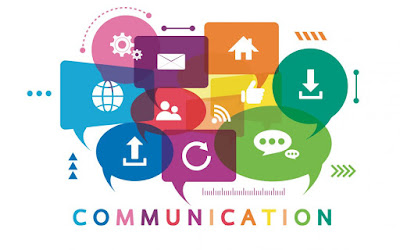Puns have always been a part my family.
They take a sharp mind and a degree of knowledge of the English language.
Or is there more to it?

The use of figurative language dates back as far as the ancient Greek and Roman philosophers. Aristotle believed that figurative language was not as much a way to
embellish language, but more a verbal way to express how people think and process information in order to understand more complex concepts.
Think about it. When we try to explain a new concept, we often compare it to something that is known. I had no concept of Pickleball. Clearly, it did not involve a ball and pickles! I was able to gain a better understanding when it was compared to things I was familiar with: ping-pong, badminton, and tennis. I still do not understand the rules or could I go out and play Pickleball, but I have a much better basic understanding of the game.
Figurative Language is prevalent in our lives; not only through deliberate use of literary elements, but because the human brain reacts positively to similes, metaphors, puns, onomatopoeia, oxymoron's, and such when attempting to understand new concepts. As educators, we find ourselves having to come up with umpteen alternative ways to explain just a single concept. We offer comparisons, exaggerations, opposites, humor, personification, and rhyming/repetitive sounds as opportunities for students to make a connection.
⇸⇸⇸⇸⇸⇸⇸⇸⇸⇸⇸⇸⇸⇸⇸⇿⇿⇿⇿⇿⇿⇿⇿⇿⇿⇿⇿⇿
Your wonderful singing: You sounded like angles!
I'm soooo busy: Busy as a bee.
Noise level in the cafeteria: As loud as a screaming baby.
Metaphors
Class behavior: This place is like a zoo.
The technology lab: The computers are as old as dinosaurs.
Recess: The kids looked like monkeys on the jungle gym.
Hyperbole
Do you have any homework? A ton!
What is you mom going to do when she finds out you didn't study? She's going to kill me!
You eat so much! My stomach is a bottomless pit.
Oxymoron
Stop whining, you are acting like a big baby.
When you make that face you look pretty ugly.
That's a definite maybe.
I am listening to you, can't you see that I'm all ears?
Onomatopoeia
Sheep say "baa".
The snake will hiss at you if you get too close.
Cock-a-Doodle-Do!
Alliteration
The big bad bear bit the bike seat.
Mickey Mouse
She sells seashells at the sea shore.
Personification
Lightening danced across the sky.
The last piece of pie is calling me.
Time flies.
⇸⇸⇸⇸⇸⇸⇸⇸⇸⇸⇸⇸⇸⇸⇸⇿⇿⇿⇿⇿⇿⇿⇿⇿⇿⇿⇿⇿
Why Figurative Language is Important
Since figurative language is so prevalent in our daily lives, it is important to teach students to decipher their meanings. It may seem trivial to know the difference between a metaphor and a simile or between onomatopoeia and alliteration, but the need to understand their meanings is not trivial. Understanding figurative language is not only a sign of strong literacy skills, but allows us to better function in society.
Using Figurative Language
- engages readers
- creates pictures or word pictures
- makes complex concepts easier to understand
- allows a less complex way to explain a difficult concept
- adds elements, such as mood, tone, emotion, and humor, to writing
- makes places, events, and actions more relatable
- helps readers focus on the message, what the author is trying to convey
- strengthens writing
- is more compelling
Below are a couple of my favorite resources to teach figurative language.
~ IDIOMS ~
~ IDIOMS ~
SAMPLE
(Please excuse the video quality as I had to 'hack'
uploading a secure animated PowerPoint)
(Please excuse the video quality as I had to 'hack'
uploading a secure animated PowerPoint)



















